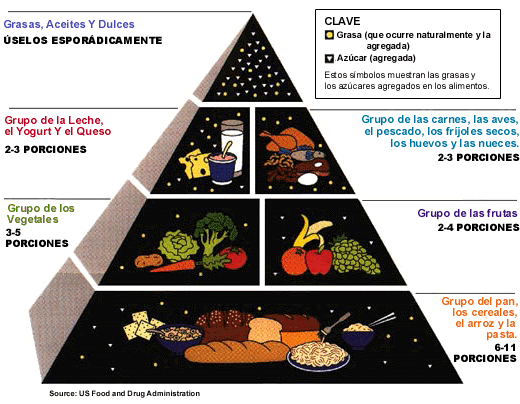Es una pregunta muy frecuente, pero nunca nos hemos parado a pensar realmente si hoy he comido bien. El trabajo que he mandado en clase y que estais haciendo en estos momentos (o eso espero), intenta provocar en vosotros y vuestro entorno un análisis de cómo es mi alimentación diaria.

Todos sabemos que os encontrais en un periodo de cambios (físicos, mentales o psicológicos y sociales), pues es en este momento donde la alimentación, la actividad física y los hábitos posturales diarios cobran una mayor importancia.

Existen muchas tablas o pirámides de la alimentación, pero lo importante es que cada un@ en su casa siga unos consejos básicos: comer de todo (aunque no me guste: ¿lo habeis probado de verdad?), muchas frutas y verduras, que la grasa o los dulces se coman de forma esporádica, no comer con demasiada sal y sobre todo, desayunar bien.
RECORDAD: en vuestro trabajo teneis que apuntar lo que comeis y bebeis durante una semana, intentando concretar algunos aspectos
ES VUESTRA GASOLINA ¡QUE APROVECHE!



